The word “iconic” frequently gets thrown around the watch industry, but there really are some timepieces deserving of this term. Models such as the Rolex Submariner, Audemars Piguet Royal Oak, and Omega Speedmaster are undisputed legends within the watch industry and the prestige and notoriety of these models is so great that it permeates through to the rest of popular culture. However, alongside these icons is another timepiece that offers a unique design that most people will recognize, even if they are not watch enthusiasts, and that is the Breitling Navitimer.
Worn by countless noteworthy individuals, from Miles Davis and John Travolta to Jerry Seinfeld and Dave Chappelle, the Navitimer is easily Breitling’s most famous line of watches, and the model has a long and rich history that dates all the way back to 1952. With that in mind, despite its countless celebrity owners and illustrious heritage, the single thing that defines the Breitling Navitimer above all else and the feature that is most responsible for its fame and enduring success is its slide rule bezel.
So, how the hell do you actually use it?
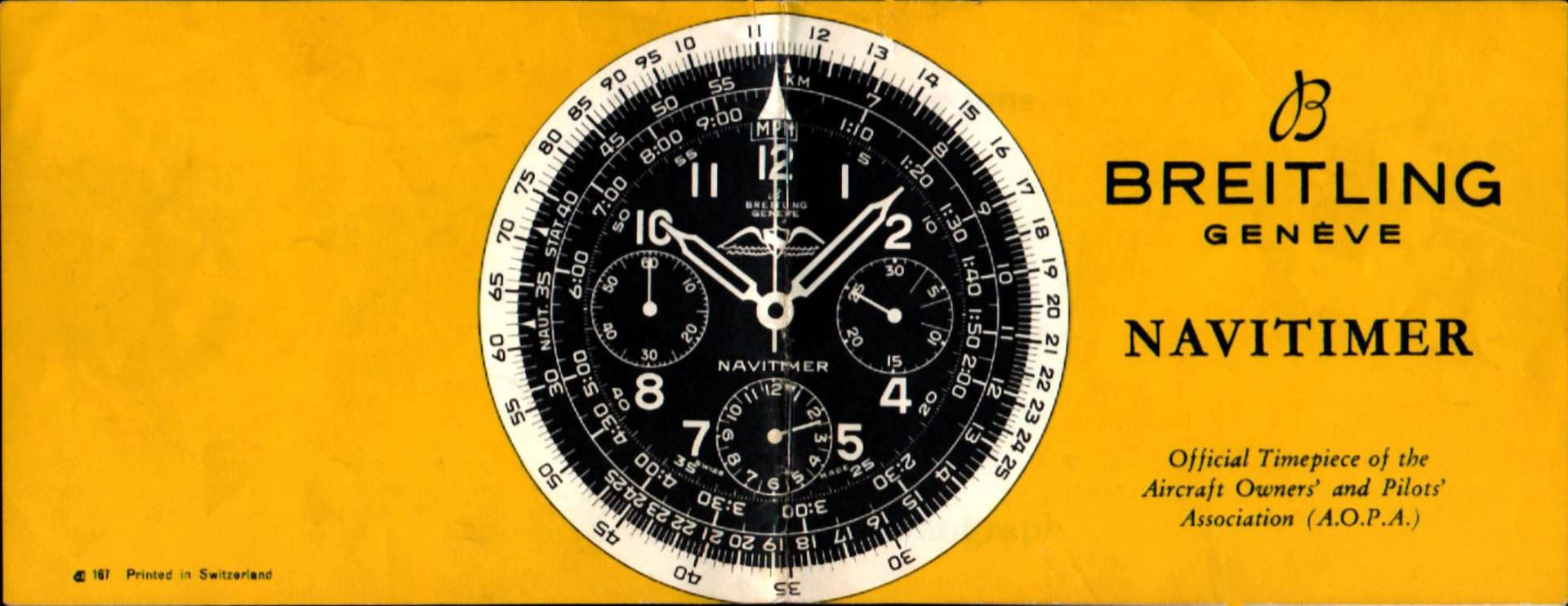
Although the slide rule bezel is now the Navitimer’s signature characteristic, this feature actually debuted on a different Breitling watch before making its way over to the Navitimer. The very first instances of circular slide rule bezels being paired with time-telling devices date back to the late 1800s. However, these were all pocket watches and it would not be for about another half a century before purpose-built wristwatches fitted with slide rule bezels would make an appearance.
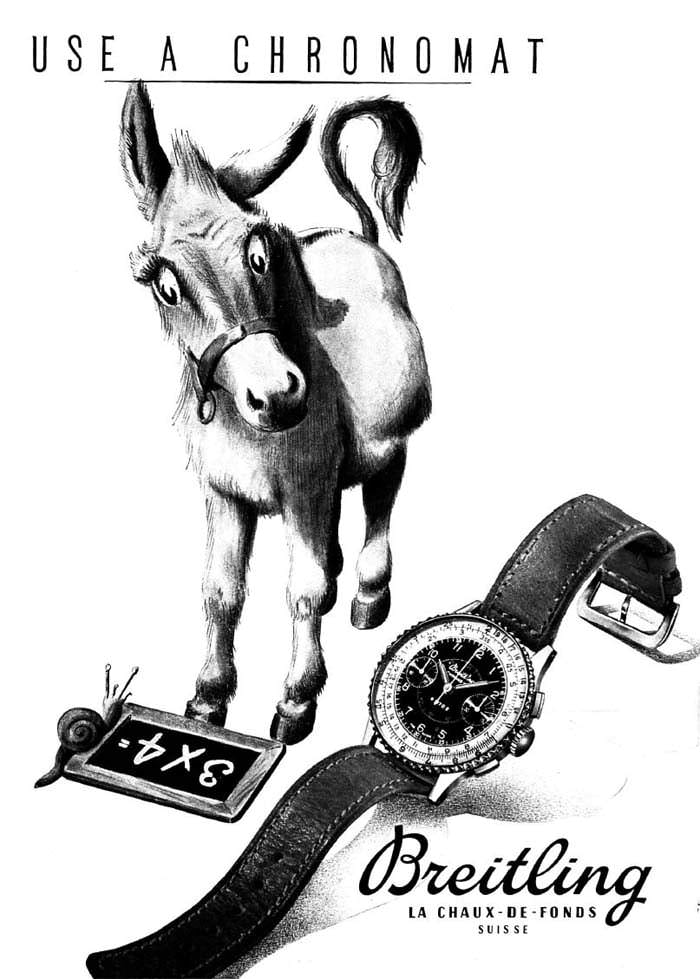
Breitling was among the first brands to produce a wristwatch with a slide rule bezel. Initially appearing in 1942 as a timepiece intended for scientists and mathematicians, the Breitling Chronomat featured a bidirectional rotating bezel that contained a slide rule scale (patent number 217012). By working in conjunction with the watch’s integrated chronograph, users could easily measure things such as speed or distance and also perform a number of different calculations and conversions.
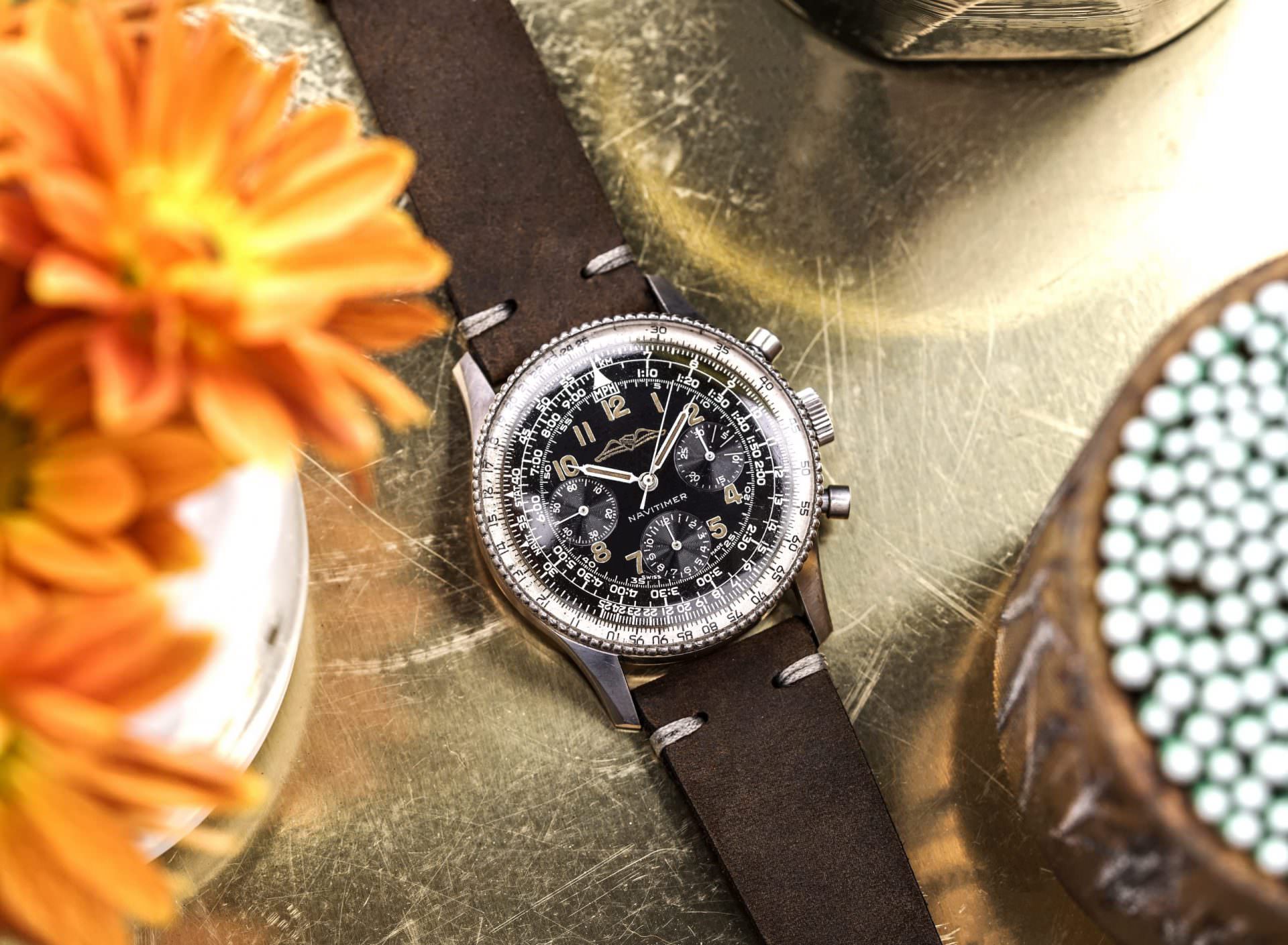
A decade later in 1952, Breitling launched the Navitimer, which took the same basic concept of the original Chronomat and modified it for aviation purposes, enabling pilots to perform all necessary in-flight calculations directly from their wristwatches. At the time, this degree of advanced functionality was truly groundbreaking, and the Breitling Navitimer was immediately a success among pilots and could almost be regarded as the “smartwatch” of its day.
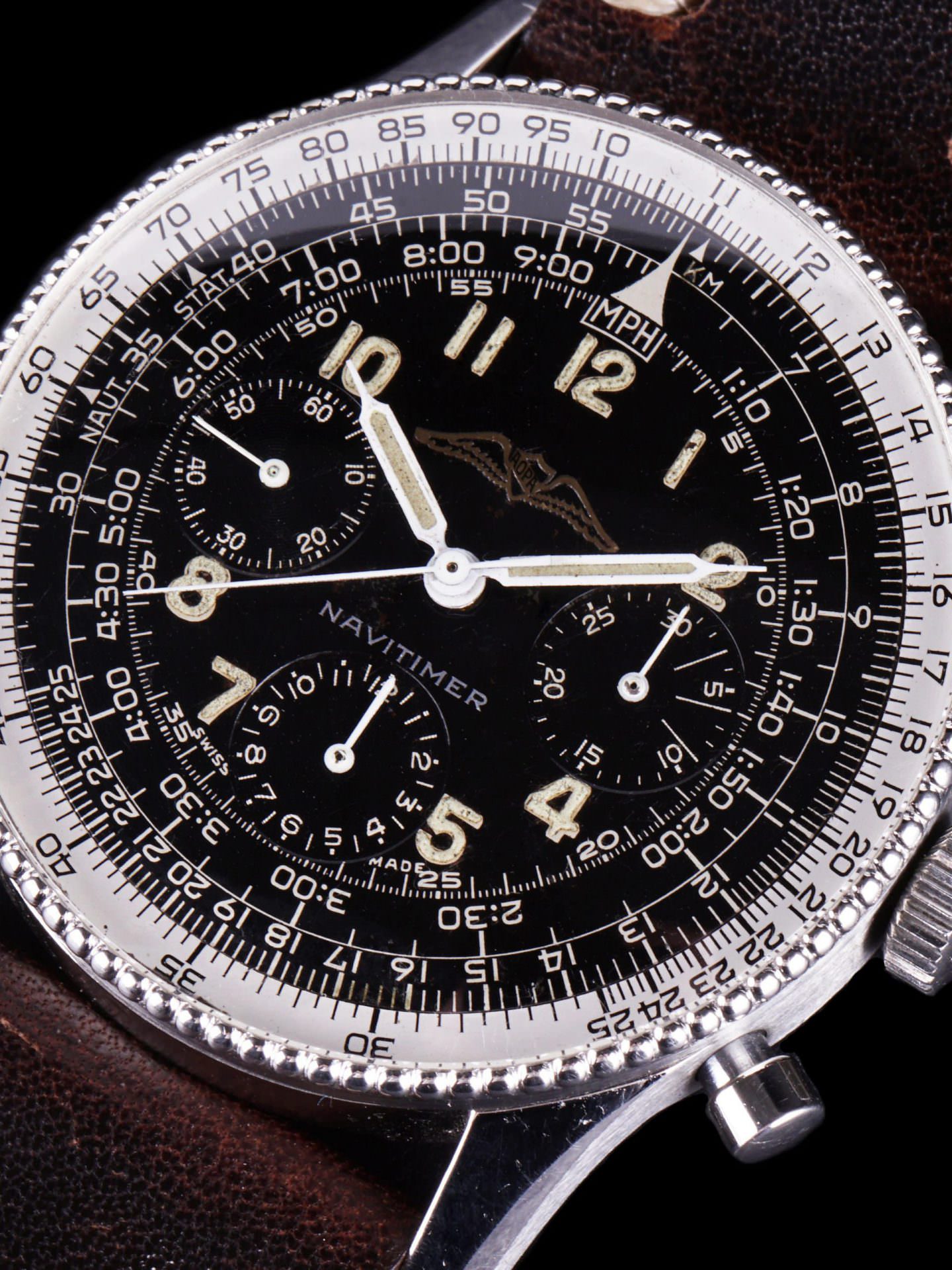
While the slide rule bezel on the Navitimer was specifically adapted for pilots, this does not mean that it cannot also be used for much more mundane tasks in our everyday lives. At its core, a slide rule bezel is an incredibly versatile feature and its high degree of functionality means that it can be used to compute a wide range of different calculations and conversions.
Just like a traditional slide rule, the Breitling Navitimer’s bezel can be used for multiplication, division, and unit conversions. This opens up the doors to an incredibly wide range of uses, and it is impossible to create a collectively exhaustive list of all the different things that it can help compute. In the same way that there exists a virtually infinite number of uses for multiplication and division, the slide rule bezel on the Breitling Navitimer can be used for a virtually endless list of different applications.
Multiplication and division are among the most simple and straightforward of its uses, but the open-ended nature of its design means that it can also be used for calculating flight time, fuel consumption, ground speed, wind impact, rate and distance of climb or descent, currency exchange, and more. Additionally the Navitimer’s bezel can also be used for a wide range of different unit conversions, such as Celcius to Fahrenheit, miles to kilometers, gallons to liters, pounds to kilograms, and just about any other type of conversion you can imagine, along with even being able to calculate the the tip at a restaurant.
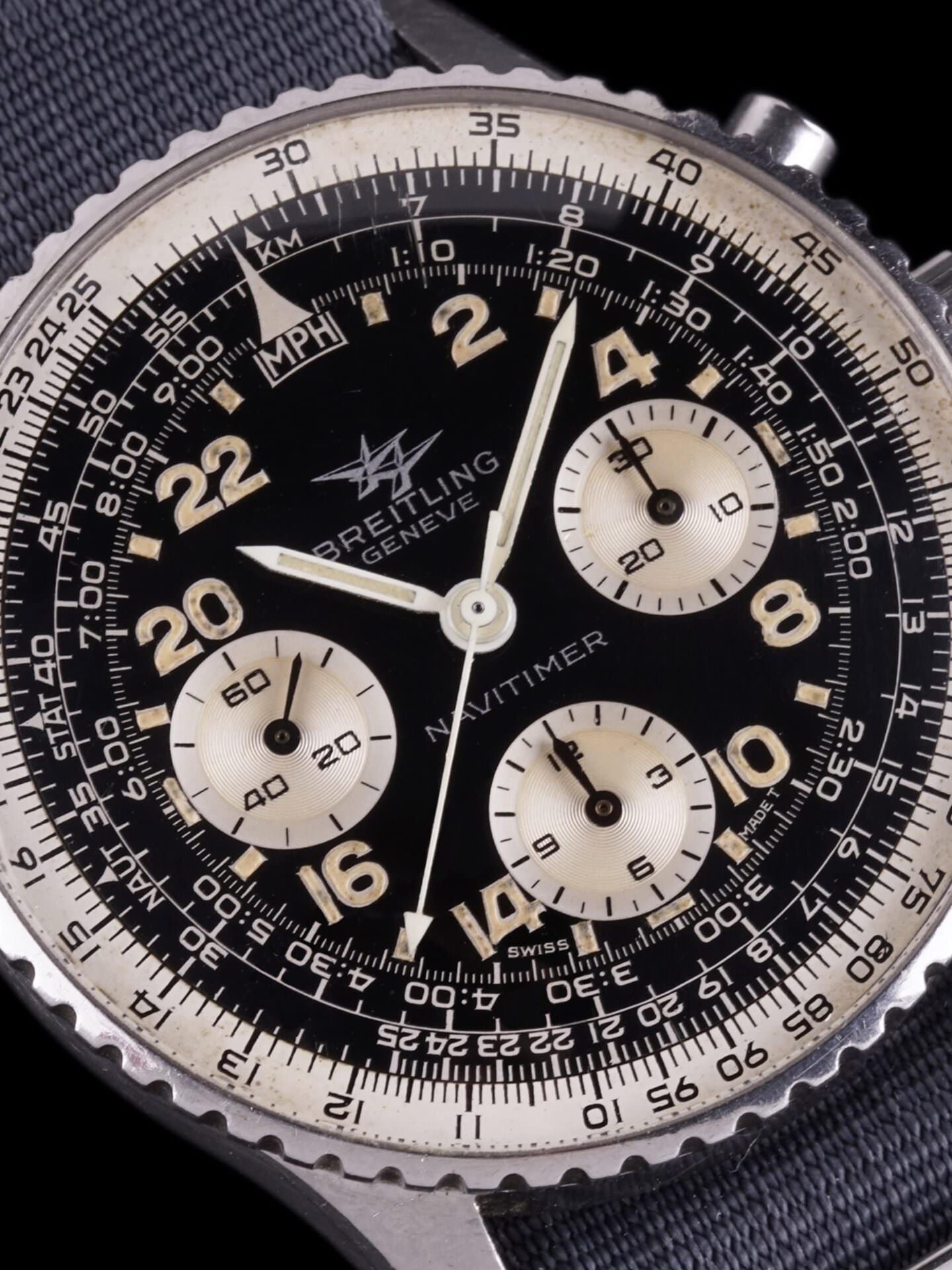
Before you start using your Breitling Navtimer, it is first important to understand a few things about how a circular slide rule actually works. From here, adapting its functionality to different uses is a rather simple process, as the steps involved for converting one unit to another are more-or-less the same, regardless of what you are actually converting.
First and foremost, it’s important to note that the slide rule scale does not account for decimal places or powers of ten. Therefore, regardless of whether you are starting with 2.5, 25, 250, or 2500 as your initial value, you will still select the same number on the scale. For this reason, it is important to have at least a rough idea of what the end value will be since you will have to adjust for the appropriate decimal point after you perform the calculation or conversion.
Additionally, it is also important to remember that due to the nature of the slide rule bezel and its limited markings, you may not receive an exact answer, but rather an approximation of the value. For example, the bezel on your Breitling Navitimer may give you a value of 35 but in reality, the exact answer might be 34.675. For the vast majority of applications, this will be more than adequate but it is important to keep this detail in mind should you ever need an exact figure that is not a whole number.
It would be futile to outline every possible use for the Breitling Navitimer’s bezel, and its applications are really only limited by your imagination (along with your willingness to use it instead of an electronic calculator or your smartphone). With that in mind, below is a quick tutorial for some of the most common and practical ways that you can use the slide rule bezel on your Breitling Navitimer in your everyday life.
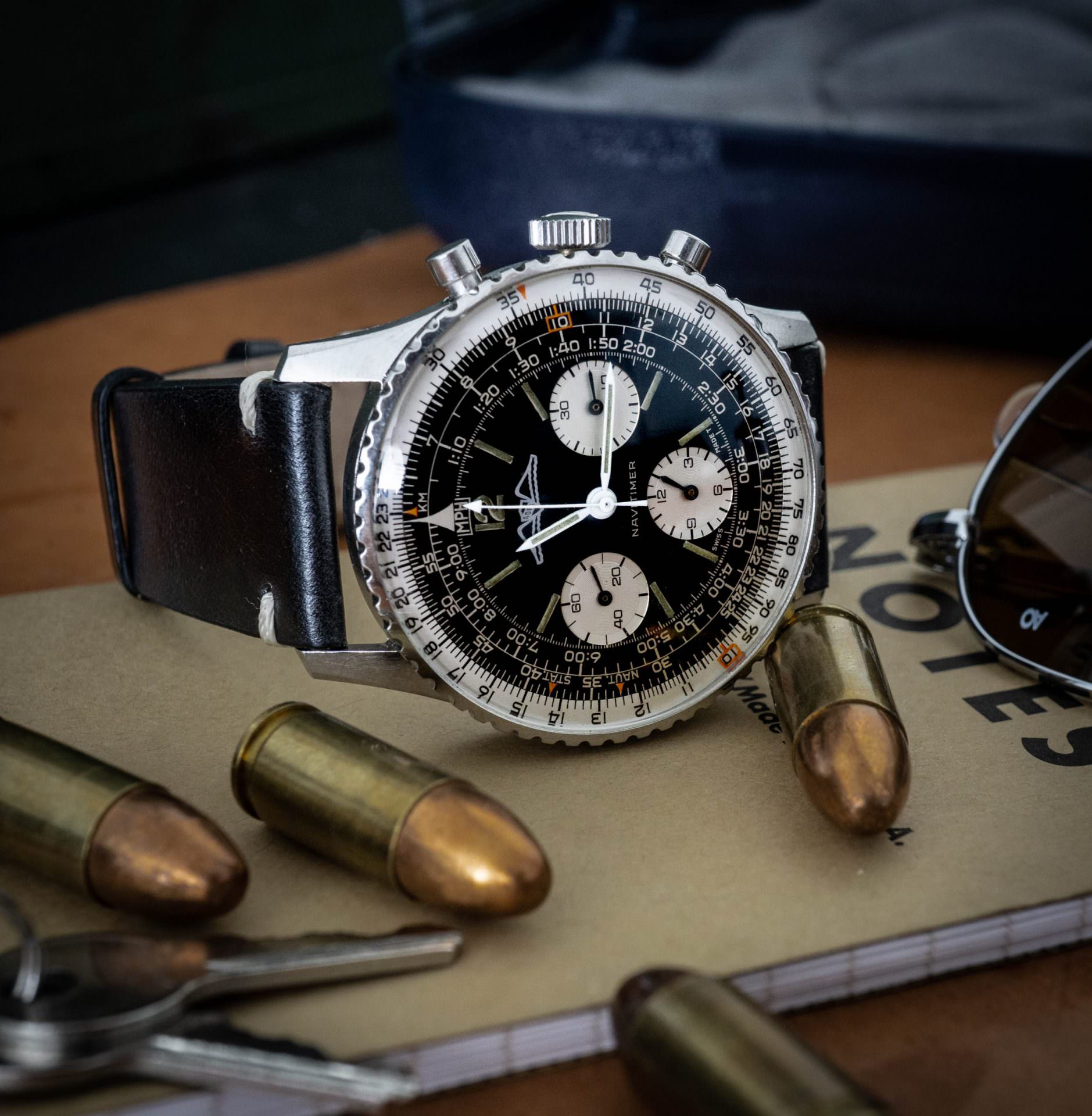
Multiplication
To use your Navitimer’s slide rule bezel to multiply two values, first locate the ‘10’ unit index marker located on the fixed inner scale; this will be found between the 2 and 3 o’clock hour markers. The unit index markers on the Breitling Navitimer’s slide rule bezel (often printed in a different color than the rest of the markings) serve as the reference points for different scales, and this inner ‘10’ is the one that you will want to use whenever you multiply or divide.
From here, rotate the bezel so that one of the two numbers you wish to multiply is next to the ‘10’ unit index marker. For example, if you wish to multiply 7 times 9, rotate the outer scale so that the 70 (remember this will be the same as 7 since slide rule bezels do not account for decimal points or powers of ten) is next to the unit index marker ‘10’ and then reference the corresponding number on the outer scale that now lines up with the 9 on the inner scale. If you did this correctly, it should line up exactly with 63.
Due to the commutative property of multiplication, changing the order of the numbers that are multiplied does not change the product. This means that it does not matter which of the two numbers you choose to align with the ‘10’ unit index marker, just as long as you reference the other when it comes time to locate your answer on the adjacent scale.
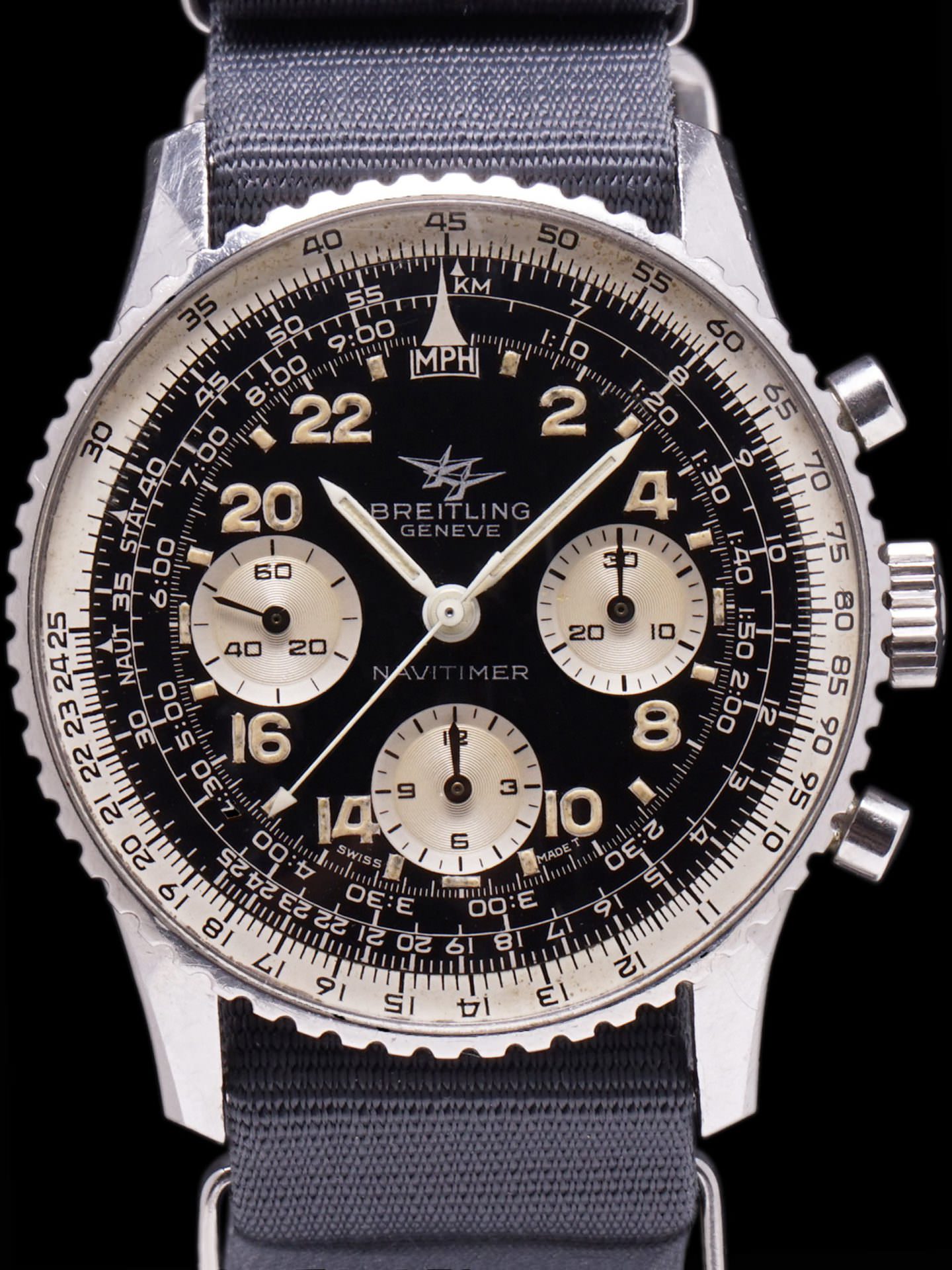
Division
When dividing, you will still use the unit index marker ‘10’ as your point of reference but the process itself is slightly different than when multiplying. The key detail to remember whenever using your Breitling Navitimer’s bezel for division is that the dividend must always be on the rotating outer scale, while the divisor must be on the fixed inner scale.
For example, should you wish to divide 60 by 8, simply rotate the bezel so that the 60 (the dividend) on the outer scale is lined up with the 8 (the divisor) on the inner scale. From here, simply reference the corresponding value on the outer scale that is now lined up with the ‘10’ unit index marker on the inner scale and that’s your answer.
Keep in mind that this same process will also work with both larger and smaller numbers since 60, 600, and 0.6 will all use the same value on the outer scale. The only additional step is that you must remember to adjust the decimal point once you’re done finding the corresponding value on the outer scale, but the actual process itself is exactly the same.
Currency Exchange
The slide rule bezel on the Breitling Navitimer can also be used to compute currency conversions, but you first must know the current exchange rate in order to perform these calculations. With that in mind, the process itself is identical for every type of currency conversion, so as long as you know the exchange rate, you can use the slide rule bezel on your watch to figure out the rest.
For example, let’s say that one U.S. dollar is equal to three-quarters of a euro; this gives us an exchange rate of $1 = €0.75. Using this known exchange rate, align the 75 on the outer rotating scale (remember, this is the same as 0.75) with the ‘10’ unit index marker that is located on the fixed inner scale.
Once the exchange rate has been set, the inner scale will correspond to U.S. dollars, while the outer scale will represent euros. The equivalent values for each currency will appear opposite each other on the two synchronized scales, so all you need to do is remember to move the decimal points over (if necessary), and then reference the corresponding number on the opposite scale for the other currency.
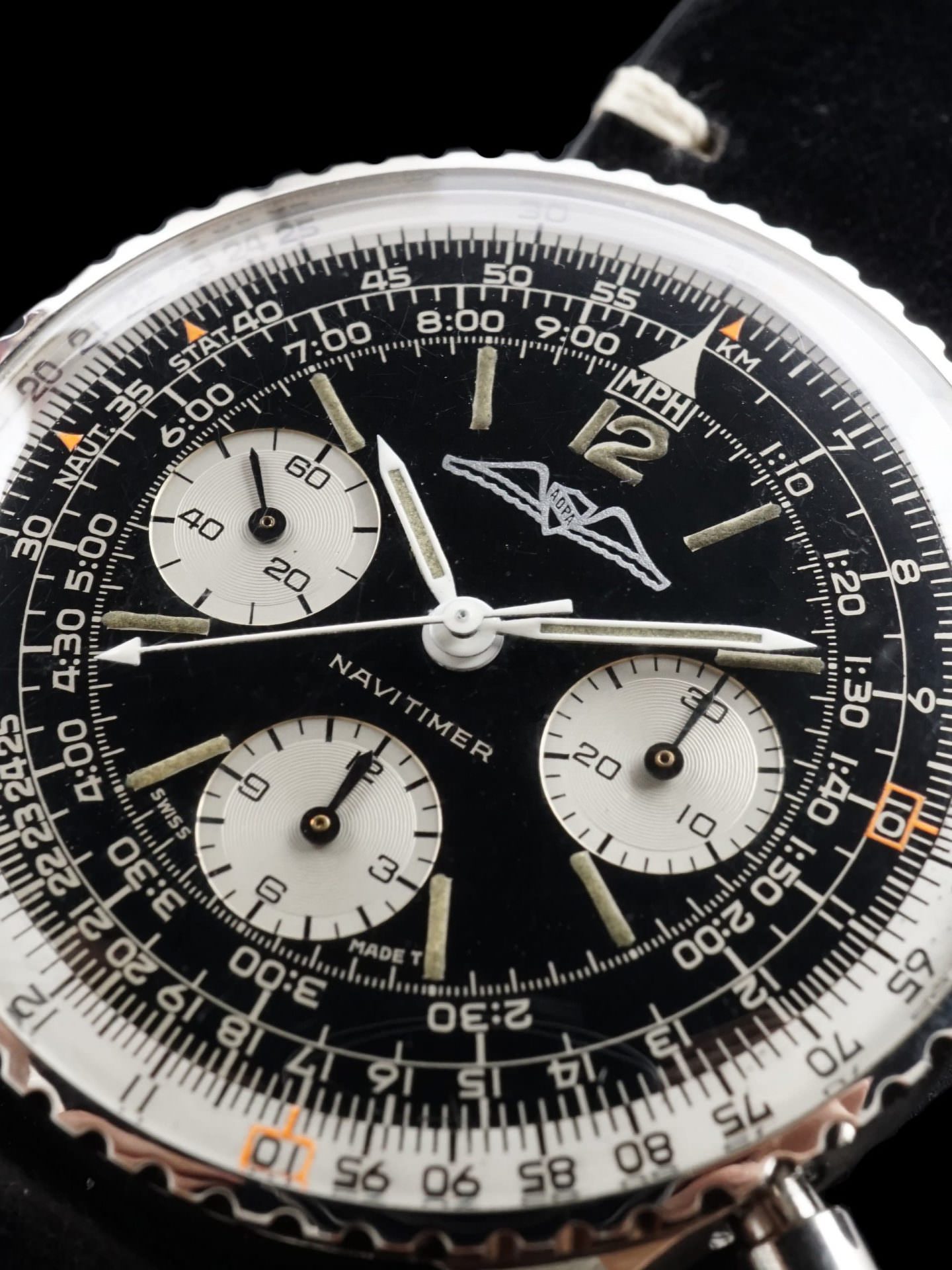
Temperature Conversion
Calculating temperature conversions follows a similar basic process as computing currency conversions, except it requires one additional step since it does not follow an exact ratio like a currency exchange rate. For example, let’s say you want to convert degrees Fahrenheit to degrees Celsius. The formula for this is (°F − 32) × 5/9 = °C, which means that the fractional ratio of Fahrenheit to Celsius is 5/9 but you first must subtract 32 from your initial Fahrenheit value before you can proceed with the conversion.
To convert a reading in Fahrenheit to degrees Celsius, first line up the 50 on the outer rotating scale (remember this is the same as 5) with the 9 on the fixed inner scale; this establishes the conversion ratio. Next, you will want to subtract 32 from whatever the temperature is in degrees Fahrenheit and locate this number along the inner fixed scale. Let’s say you are using the boiling point of water (212°F); once you subtract 32, you are left with 180. Now, look to the corresponding number on the outer scale that is now lined up with the 180 on the inner scale, and you will see the number 10 (which is the same as 100), and 100°C is the boiling point of water.
Similarly, if you want to convert 87°F to degrees Celsius, first subtract 32 to give you a value of 55. Next, locate the 55 on the inner fixed scale, which corresponds to roughly 30.5 on the outer rotating scale, and this will be your temperature in degrees Celsius. The exact answer is actually a non-terminating decimal value (rounded to 30.556), but since you are limited by the number of markings on the Breitling Navitimer’s bezel scales, 30.5 is as close as you can get to the true value in Celsius – which is pretty damn good considering that this is all done with just the bezel on your watch.
Tip Calculator
For all the Breitling Navitimer owners out there that are not pilots, probably one of the most practical uses for the slide rule bezel in daily life is to help you calculate the tip at a restaurant. Just like with the rest of the calculations it performs, there will be some degree of approximation and you must also have a rough estimate of how much you will be leaving (such as $10 versus $100).
For example, let’s say you wish to leave a 20% tip on a $75 tab at a restaurant. First rotate the outer scale so that the value of your bill is lined up with the ‘10’ unit index marker located on the fixed inner scale. Next, find the value of your tip percentage on the inner scale, which in this case would be 20. From here, reference the corresponding number on the outer scale that is now lined up with the 20 on the fixed inner scale, and there’s the amount of your tip – which in this case would be $15.
Since slide rule bezels do not account for decimal places, calculating a 20% tip on a $750 meal would be done the exact same way by aligning the 75 with the ‘10’ unit index marker on the fixed inner scale. However, because the cost of your meal is actually ten times the value represented on the bezel, the correct amount for the tip would also need to be ten times the corresponding value displayed on the outer rotating bezel, which in this case would be $150.
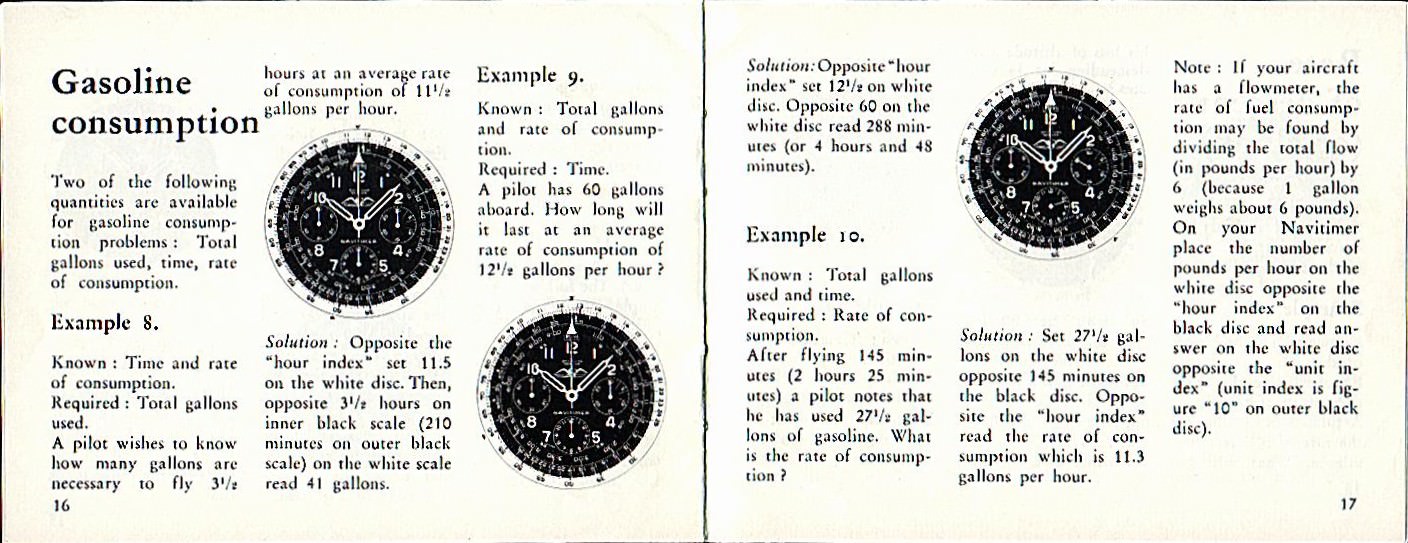
Like most timepieces created during the golden era of tool watches, the Breitling Navitimer is no longer an essential piece of equipment, but that doesn’t mean it is entirely obsolete either. While there are now digital flight computers that are far easier and more intuitive to use, pilots are still required to know how to use analog flight computers, meaning that the Navitimer’s slide rule bezel isn’t quite as outdated as a mechanical dive watch or a doctor’s watch that relies on a pulsometer scale.
Additionally, there are a few things that a slide rule bezel can actually do more efficiently than a digital calculator such as temperature and currency conversions. While you may have to settle for approximate answers in some instances, using your watch’s bezel can often be a quicker and easier process than using a modern calculator. Temperature conversions require multiple steps and this can be a bit of a cumbersome process on a digital calculator since the different steps must be performed in the correct order.

Furthermore, when using a slide rule bezel for currency conversions, once you have it set to the proper exchange rate, you can simply reference the bezel for different values, rather than having to enter the same equation into a calculator each time you want to convert a different amount. This can be especially convenient when shopping in a foreign country as you can quickly reference your watch to get an estimate of the price, rather than fumbling with your phone or having to rely on a sales associate to help you with the conversion.
With a little bit of practice, the slide rule bezel can still be a highly useful feature – even in a world packed full of smartphones and other digital devices. While it may have represented pure functionality in the pre-digital era, its distinct aesthetic and rich history has made it a favorite among collectors, and it is the single feature that is most responsible for the Navitimer’s enduring success.

Check out 'Reference Tracks' our Spotify playlist. We’ll take you through what’s been spinning on the black circle at the C + T offices.

Never miss a watch. Get push notifications for new items and content as well as exclusive access to app only product launches.
Sign up for our newsletter to receive updates and exclusive offers